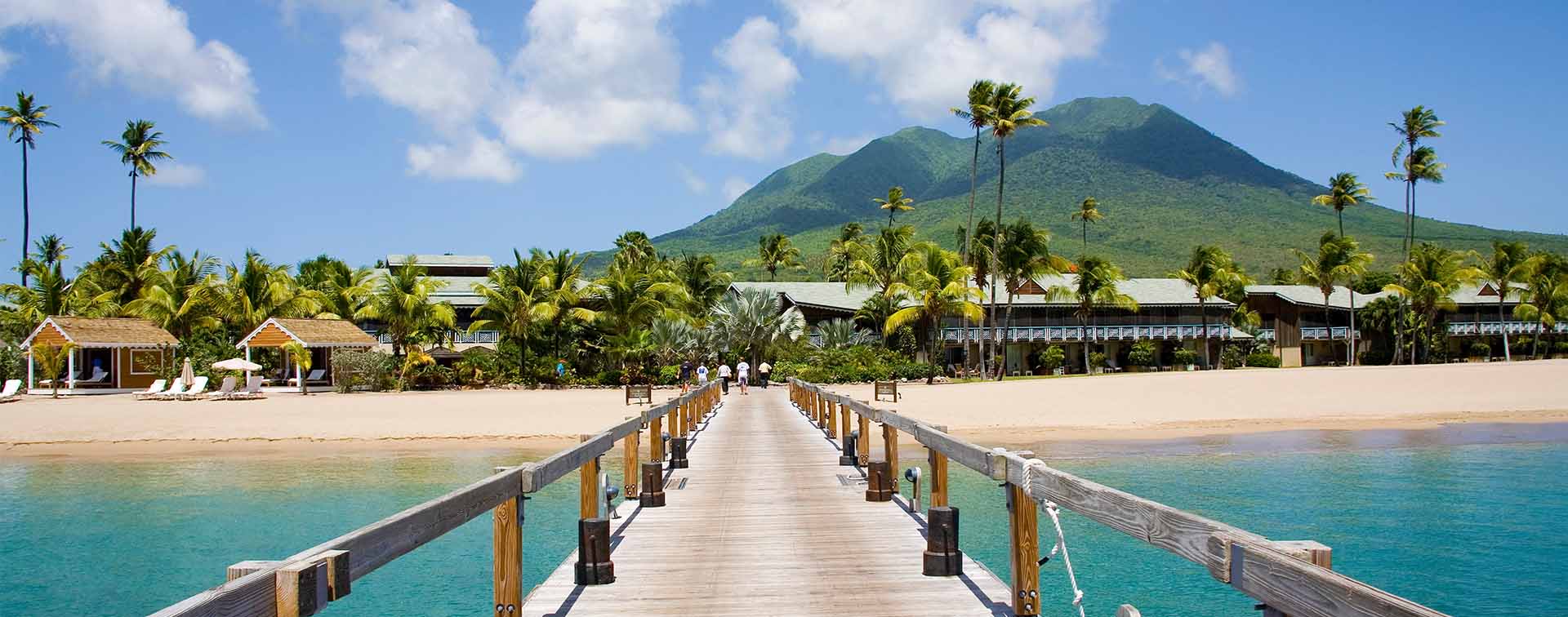
Robert MacLellan is the Managing Director of the leading Caribbean-based hospitality advisory group MacLellan & Associates.
Situated strategically between the Americas and Europe, with convenient air services to all three continents, the Caribbean attracts visitors from around the world. While the region consistently draws vacationers, the recent rapid growth in the Caribbean vacation home market has become a powerful factor in the economic recovery of many islands as the Covid impact recedes. Through decades of local knowledge, MacLellan & Associates has identified nine essential factors for successful Caribbean resort and leisure real estate projects, which we share here with potential developers, vacation home buyers, and those interested in real estate-linked investment migration.
As hotel and leisure real estate development advisers based in the region, we should clarify our definition of ‘The Greater Caribbean’. For 25 years we have counseled projects from The Bahamas and Bermuda in the north, south to Trinidad and Tobago, west to Belize, Costa Rica, and the Honduras Bay Islands — and virtually every island in-between.

The region is home to countries with different languages, cultures, economies, and politics — a reflection of their various American, Danish, Dutch, English, French, and Spanish histories. In most nations the political climate is stable, visitors are warmly welcomed, and visitor-related crime is rare. However, language, legal systems, and lifestyle are deciding factors in where developers and home buyers feel most comfortable.
People can seek out different cultures and lifestyles in the Caribbean as there is something to suit everyone. For those who prefer active pursuits, Aruba, Nassau, and San Juan offer a range of daytime and nighttime activities, multiple large resorts, and various leisure real estate offerings. At the other end of the spectrum, for those seeking peaceful escapes, the Bahamas Family Islands, the British Virgin Islands, and Dominica offer unspoiled natural beauty and serenity and a respect for the environment.
Many Caribbean countries make it relatively easy for people to obtain residence rights when purchasing property, while Antigua and Barbuda, Dominica, Grenada, St. Kitts and Nevis, and St. Lucia offer successful citizenship by investment programs with real estate options. The Covid-19 pandemic has driven many people to invest in second or third homes in destinations perceived as safe ‘bolt-holes.’ And to accommodate the less permanent ‘digital nomads’, another trend that has been spurred on by the pandemic, some island nations have simplified their immigration procedures.
While all Caribbean countries have become more eco-conscious, some present greater bureaucratic or environmental challenges than others. Developers, and sometimes individual villa buyers, may come into contact with building-density ratios, setbacks from shorelines and mountain tops, hurricane and earthquake-related construction codes, building height restrictions, land registries, and environmental impact assessment studies. All planning applications should be pursued sensitively to acknowledge the needs of all parties involved.
It is vital to position resort and real estate offerings in keeping with a destination’s profile and tourism strategy. Grand Cayman’s Seven Mile Beach has a string of large resorts, including a Ritz-Carlton and a Kimpton. These properties match the region’s high-density luxury condominiums and are arguably the most expensive real estate in the Caribbean. On the other hand, Costa Rica and the Dominican Republic offer value-for-money hotels and very competitively priced vacation homes. In Anguilla, resort development continues to be high-end, low-density, and with restrictions such that beachfront condos for sale are subject to a mandatory rental program.
In recent years it has become evident that design and aesthetics have grown in significance, both for successful resort development and to attract leisure real estate buyers. Thoughtful master planning to match the natural environment, splendid architecture, and outstanding interior design are now prerequisites for the viability of projects. Many hotel companies insist on these standards if a resort is to be branded.
An appropriately fashionable hotel brand can support higher hotel room rates and real estate prices. While the Caribbean has historically had fewer branded hotels than in North America, changes are underway. Some standardized hotel designs require fast-track or low-cost construction methodologies used in the USA that are difficult to implement in many islands. Recently, major hotel groups have introduced many ‘soft’ brands, such as Hilton Curio, Hyatt Unbound, Marriott Autograph, and Wyndham Registry Collection. These brands are particularly suitable for the Caribbean, providing hotel groups with global marketing and reservation systems, but allowing greater flexibility in design, construction, and operating systems.
Today’s investors, hotel guests, and condo and villa buyers, are increasingly sophisticated with greater expectations relating to real estate and resort design and facilities. Consumer trends must be recognized and addressed. Casinos, tennis, and even golf are in decline as vital activities for a resort, particularly among younger patrons. Today, ‘soft adventure’ is in demand, including all-terrain vehicles, horse riding, trail walking, and zip-lining. ‘Glamping’ tents have become accepted as luxury hotel accommodations. At virtually every price point for resort rooms or leisure real estate, a ‘wow factor’ is a must.
Today, most leisure and investment real estate marketing is conducted on digital platforms —attractive websites with detailed supporting data. It is important that any promotional material is comprehensive and truthful in its content. After showing initial interest in a particular resort or investment migration program, potential investors should have their own specific queries addressed personally by trusted professional advisors so that they can be completely confident in the accuracy of all information provided.
To ensure the viability of new Caribbean resorts for investors and developers alike, pricing of both hotel room rates and leisure or investment migration real estate must closely relate to total development costs as well as to operating costs. In an ideal world, a new resort development would be located in a destination with the lowest costs but no fixed ceiling on hotel room rates or real estate values. The Amanera Resort at Playa Grande on Dominican Republic’s north coast comes close to this ideal. The development has benefited from the Dominican Republic’s cost base — probably the lowest in the region — but the Aman Resorts brand commands some of the highest hotel room rates and the best leisure real estate values in the world. This represents a perfect scenario for both the developer and the villa owner, particularly when residence formalities are simple for property buyers in Dominican Republic.
Elsewhere in the region the same, very attractive cost-to-rental revenue ratio does not apply. Bermuda has among the highest development and operating costs in the Greater Caribbean but annualized hotel room rates do not match those of Grand Cayman. With such high costs of entry to the market, Bermuda has seen limited mixed-use resort development as it is less attractive to developers and investors. The new St. Regis Resort employed fast-track construction methods and some foreign labor to reduce development costs, but high operating costs will nonetheless make it challenging for condo owners and the hotel developer to achieve acceptable returns on investment. Unfortunately, Bermuda also has relatively demanding residence procedures.
High land prices and other development costs can be partially mitigated by governments’ tax and duty-free resort investment incentives, which vary by island. Currently, Puerto Rico and the US Virgin Islands offer extremely attractive incentives, among the best in the region, and while firstly benefiting developers, they will also result in competitive real estate prices and improved net rental revenue returns for buyers.
Leisure real estate prices can also be influenced by the issue of land being granted freehold or on a long-term lease basis — the latter being less attractive to real estate investors. Property and other taxes are a further consideration. Property taxes are relatively low in many islands but higher in the French islands. Of the Caribbean islands in the Best Investment Migration Real Estate Index, Antigua and Barbuda, Grenada, St. Kitts and Nevis, and St. Lucia have no capital gains tax, while Dominica has no property tax.
In the post Covid-19 recovery, finance for new resorts is becoming easier to secure. However, ‘off-plan’ selling by developers has not recovered since the 2008/9 downturn and its associated failed projects. For the leisure real estate investor, it is vital to verify that a new development is adequately funded through to completion, at least, on a phased basis.
It is in the interests of both resort developers and leisure real estate buyers that a project moves swiftly to completion. Historically, stalled projects have presented problems in the event of a general economic downturn. Prospective investors are advise to obtain evidence of property sales progress at a resort, and vital in achieving this is the presence of an energetic, personable, and trustworthy sales team on site.
Where all of the above factors are recognized and addressed in a balanced fashion, developers can have financial success in the Caribbean, and leisure and investment migration real estate buyers can enjoy the long-term benefits of ownership.